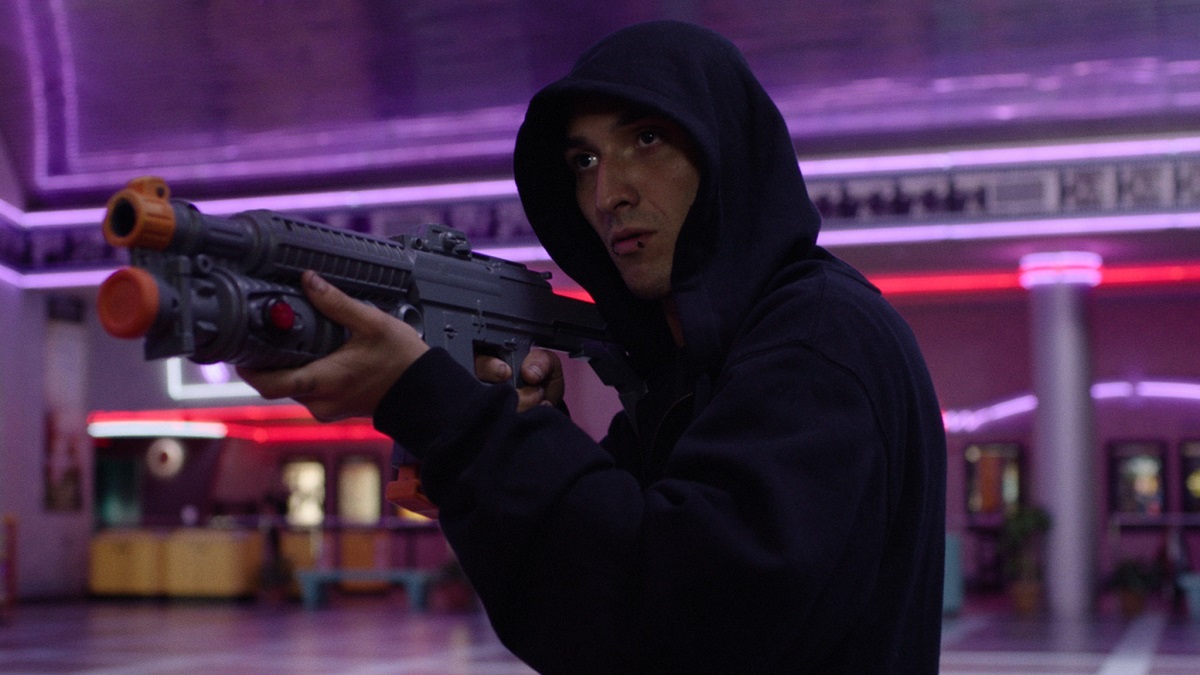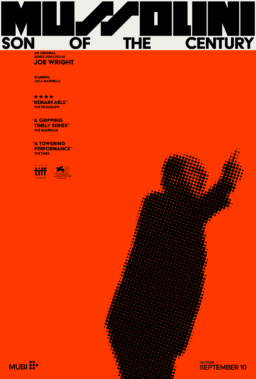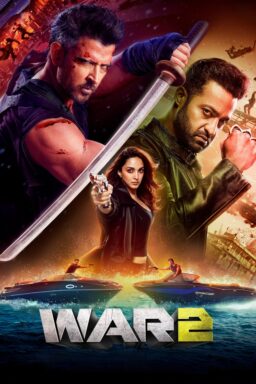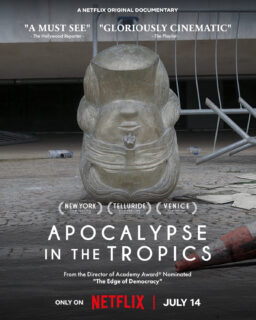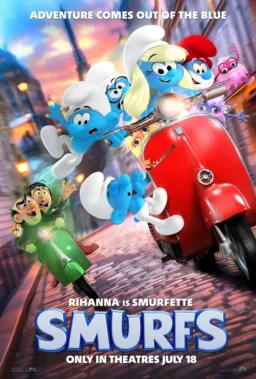My parents once took me to a gun shop in Florida on a family vacation. The shop was tucked away in a small, squalid neighborhood torn from the pages of an Elmore Leonard novel, all wiry palm trees stretching up into the white-blue sky and shattered sidewalks and dilapidated houses surrounded by unkempt grass. Disney World, that corporate bastion of childhood nostalgia and manufactured happiness, was an hour’s drive away; Disney memorabilia decorated the local tourist shops, the gas stations, the drive-by diners. When the shop owner, a whey-faced balding man whose Russian accent poured through tobacco-darkened teeth, asked how old I was, my Dad answered for me: “He’s 17, but he’s a good shot. He won a Boy Scout shooting competition.”
In Florida, a retailer cannot transfer a firearm to anyone under the age of 18, and they cannot sell a handgun to anyone under 21, but my Boy Scout credentials assuaged any concerns the man may have had. With the understanding that I was there to shoot and not to shop, he led me through a door behind the counter, to a small firing range in the back. He seemed excited to speak with a young, budding gun enthusiast, to edify me and extol his own expertise. Outside, the Floridian air was sultry and damp; inside, the room had the chilly ambience of a catacomb. The man handed me a rifle, I’m not sure what kind, and said, with a grin and a nod, “Same one SWAT uses.” When I had fired off a fusillade, he asked if I wanted to try some handguns, which, of course, I did.
I was given a box of 9mm ammo and allowed to shoot any compatible gun. I tried a Beretta 92, the gun preferred by Silver Screen police officers like Bruce Willis’s John McClane in “Die Hard,” Mel Gibson’s Martin Riggs in “Lethal Weapon,” and Robert Patrick’s cop-impersonating T-1000 in “Terminator 2”; a Glock 17, the model first wielded by Don Johnson in “Miami Vice”; and a Kel-Tec PF-9, which hit the market one year earlier, and was the cool new firearm of choice for concealed carrying. A lithe, Florida-manufactured gun apt for tiny hands such as mine, it’s the same model that was used five years later, less than a half-hour’s drive from this gun shop, by George Zimmerman to shoot Trayvon Martin.
In the dimly-lit room, a hermetic square of gray concrete riddled with holes and covered with dust, I went through a box of ammo, pumping shots into paper people while the man complimented me, expressing surprise that a gangly suburbanite kid had such an aptitude for shooting. I remember how one ejected casing ended up perched atop my hat brim, almost cutesy, with tendrils of smoke dancing in front of my eyes.
Though those paper people still dwell in a closet in my parents’ house, their faces devoid of features but mottled with holes as thick as a child’s thumb, and the box of empty ammo casings sits on a shelf next to a baseball signed by Ron Guidry, I didn’t really think about that day again for years. The memory came back to me while watching Tim Sutton’s “Dark Night,” a movie that takes place in Florida and depicts, with empathy and pensiveness, how deeply gun culture has pervaded American culture. The film has a Proustian ability to conjure memories and emotions, to manipulate and alter and sap them of nostalgia. The memory of that family vacation now curdles in the pit of my stomach like rancid milk.

“Dark Night” draws inspiration from, but does not recreate, the 2012 Aurora, Colorado movie theater shooting, during which James Holmes, just 24 years old, sauntered into a screening of Christopher Nolan’s “The Dark Knight Rises” with a shock of orange hair and a small armory of legally-acquired weapons and killed 12 people, injuring many others, and starting yet another Sisyphean conversation about the guns in America. (“It’s not the time for that conversation,” politicians invariably quip after every mass shooting, suggesting that it’s never the time for such a talk.)
“Dark Night” aspires to be one of those Very Important Films, with a poignant and relevant political idea at its core, the kind of film that can galvanize moviegoers into becoming politically-cognizant citizens. It thankfully manages to avoid many of the tropes that often afflict such films. Instead of creating fictitious depictions and what-if scenarios based on the Aurora tragedy, akin to Gus Van Sant’s Palme d’Or-winning, Columbine-inspired “Elephant” (whose fragmented structure and day-dreamy atmosphere were clear influences here), Sutton’s film exists in a post-Aurora world. Holmes appears within the first 15 minutes, first as an ethereal presence on a television news program, and later on the radio. The film follows the banal, day-to-day activities of six strangers, whose lives will, we know, collate, and end in tragedy. Sutton crafts a medley of dreamy vignettes that seem to simultaneously move towards and away from their inevitable coalescence, though by the very nature of the film we are never in doubt of how it will end.
“Dark Night” begins with a close-up of a tear-glistened eyeball soaked in the stroboscopic red and blue lights of a police car, before cutting to a wider shot of a young girl sitting in shock on a sidewalk, her tank-top adorned with an American flag. (The actors are mostly amateurs and unknowns.) The aesthetic depicts lives glimpsed in the periphery, and finds beauty, as well as portents of doom, in minutiae. We know that there will be a mass shooting, but we don’t know who will be the shooter.
The film’s most haunting quality is its insinuation that anyone incubated in American society could be capable of such an act, given how easy it is to acquire a gun, and how nonchalantly we view guns. Guns are so deeply entrenched in the American psyche, they’ve been rendered almost innocuous, as ordinary as Mickey Mouse memorabilia in an Orlando gas station. We have almost 90 guns per 100 humans in the United States, and over 40 percent of the civilian-owned guns in the world. There are 270 million guns registered here, more than three-times the amount of dogs, which makes one wonder if canines are really man’s best friend.
It’s becoming increasingly easy to obtain a gun legally, despite the assertion of some that the government is coming to take away their guns. Sometimes people literally give them away: A Rochester, New Hampshire car dealership offered customers complimentary Glock 19 handguns, as if they were toaster ovens, when they purchased certain vehicles during the first month of 2017. Second Amendment votaries flocked to the dealership to show their support. The goal is to give away 15 Glocks before the end of the month. The same dealership did a similar promotion, with AR-15 rifles, last year, giving away 20, though the restrictions on rifles in New Hampshire are more lax—you need to be 18 to own a rifle, three years younger than for a handgun. The background vetting process for the gun giveaway takes 20-30 minutes.
For many artists, it’s difficult to be subtle when discussing guns, since guns are, inherently, an unsubtle piece of equipment. Their sole purpose is, simply, to destroy things, loudly and messily, by tearing through targets, be they paper or flesh. Something that can “blow a man’s head clean off,” as Dirty Harry put it, defies understated metaphors and nuanced discourse. In this regard, the subdued “Dark Night” is a tremendous achievement—I’m not even sure if the word “gun” is mentioned at all, save for on the news programs discussing James Holmes. Though he employs a few too many hackish tricks (people screaming, with jarring and arbitrary abruptness, for an easy scare, or that annoying thing when characters stare off into the void to portray dismay before shrieking at nothing), and those with an allergy to pretension may scoff at the carefully groomed aesthetic, Sutton avoids turning his film into a think piece.
The beauty of the film is in its intimacy and familiarity, the way it can exhume the memories and feelings that a more pompous, preachy film may smother. Everything and everyone is fleeting, fragile. Characters drift across the screen, and we follow, caught in their slipstream. Sutton extrapolates minute moments from lives, taking a telescopic, expressionist view: A pair of skateboards gliding across the flat, charcoal-colored expanse of a parking light; a young man, head shaved and eyes on the perpetual verge of eruption, discussing with a therapist the way video games soothe away violent urges, before he takes a ball peen hammer to his pet turtle; an aspiring model and yoga aficionado’s butt, swaddled in variegated yoga pants, rising like a galaxy in front of a white curtain fluttering in the breeze; a petulant teenager with razor blade eyes eating milk and cookies with the same insouciance that he expresses when later pointing a rifle at the back of his unrequited love’s head.
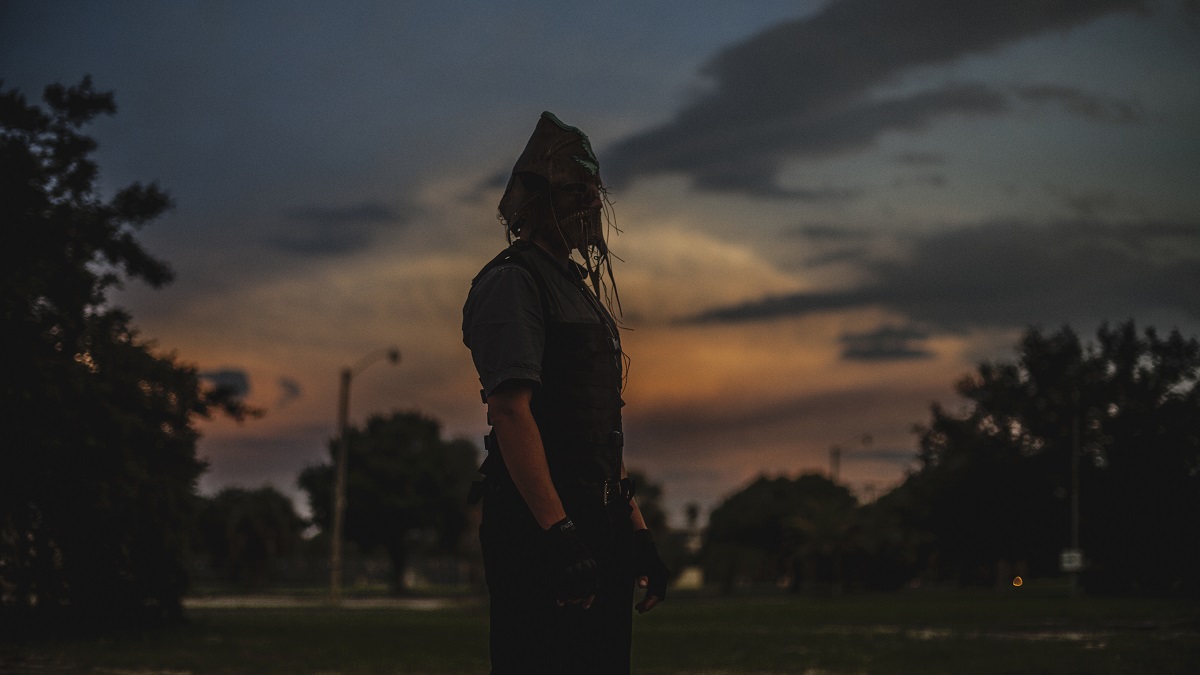
“Dark Night” was shot by the prolific cinematographer Hélène Louvart, who worked on Wim Wenders’ “Pina,” as well as Agnes Varda’s “The Beaches of Agnes.” Louvart uses the picturesque Floridian vistas to lure viewers into a sense of serenity, framing shots like souvenir postcards. The sky, a beautiful blue swath stretched overhead, starts to feel like a comfort blanket of sorts, and it’s hard to imagine a tragedy occurring under such a soft azure drapery. Yet clouds conspire, white and gray stains seeping into the sky. Violence is a natural part of this environment—ubiquitous background noise like the incessant hum of the power lines above, or the cicadas below.
Sutton evinces the normalization of guns. A gun cognoscente meticulously cleans and lubricates his beloved, laying them out carefully on a kitchen counter. He expresses admiration for the craftsmanship, yet attends group meetings because he’s having difficult getting acclimated to life after the military and assimilating back into his family. Guns seem to make more sense for him. They’re simple, controllable. Watching this character fire off rounds in a shooting range, I could feel the plastic and metal machinery in my hands again, feel it thrusting with each squeeze, my spindly arms fighting a man-made contraption for control. That small, sudden explosion, the fleeting sensation of power, the lingering aesthesis of powder and paper burning, and the oleaginous smell of empty shells glinting in the light. There’s an allure, an almost tranquil quality, to shooting that the uninitiated cannot possibly comprehend. You’re granted the ability to alter the world, one hole at a time, a physical and sort of solipsistic power literally in the palm of your hands. It’s a childhood diversion with grown-up consequences.
I remember the precision and serenity of laying prostrate on a wooden deck at Boy Scout camp, popping .22 caliber shots into a paper rectangle the size of a mass-market novel from 20 yards, shots grouped so tightly you could fit five in a quarter. Shoot well enough and they give you an award: “One must shoot 400 points on ten targets shot consecutively, six in the prone position and four in the offhand position… A handsome medal is awarded at Dress Parade for those who meet the standard set. This award may be earned only once and only by a Scout. There are special target rifles that must be used for this award.” If you shoot better than the other Scouts, the camp mails you a celebratory bolt-action rifle in 4-6 business weeks. I came in third my year.
Last June, just one week after the mass shooting at Orlando’s Pulse, Sutton’s film played as the closing night selection for BAMcinemaFest. It was a disquieting coincidence, but perhaps not a strange one, since 16 of the 30 deadliest mass shootings since 1949 have occurred in the last decade. One was bound to happen again. Before the screening, our bags were checked by police, which has become a common occurrence; the notion that someone could walk into the theater and kill 10 or 20 of us wasn’t farfetched. During my freshmen year of college, a theatre professor who was running for local office as a libertarian spoke with the College Republicans. He opined, “I can kill a man with a chunk of brick, but no one wants to place restrictions on brick chunks.” To date, there have been no mass murders involving chunks of brick in the United States.
